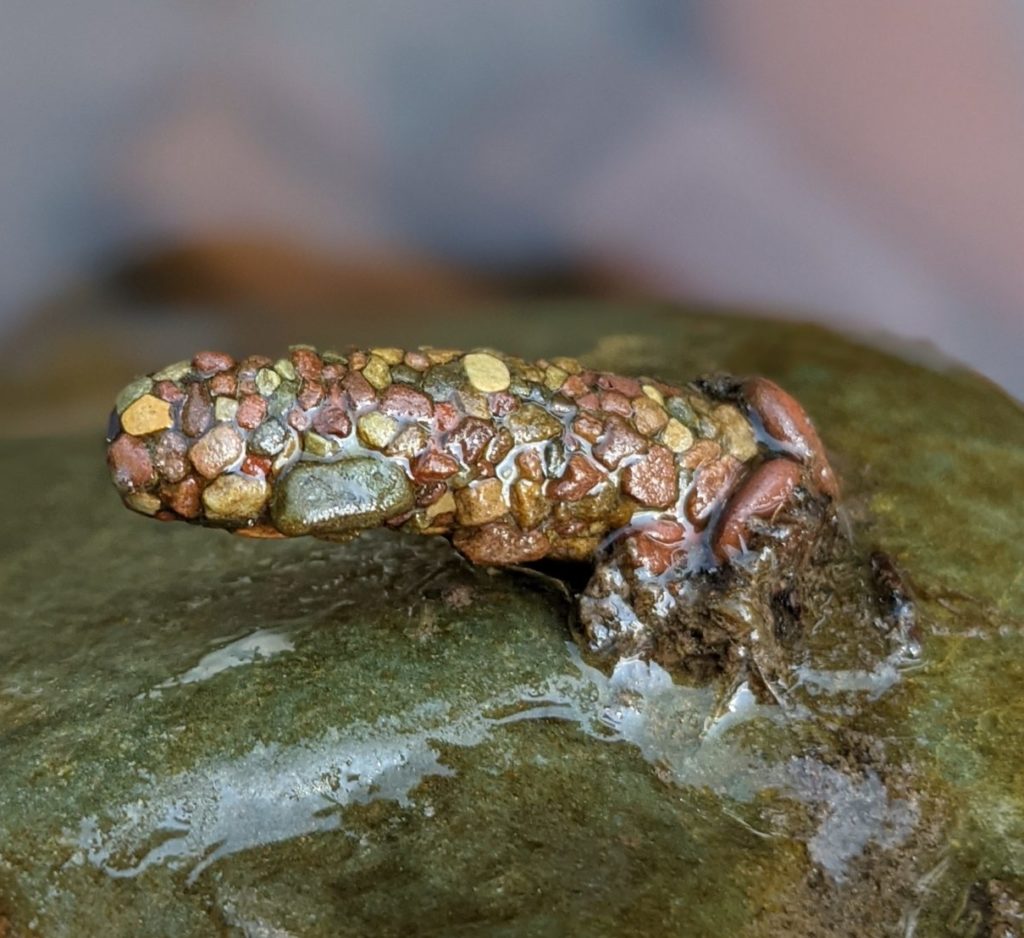This is what happens when caddis flies (and humans) get an itch for some seriously wild bling
Inside a cozy suburban laboratory in Missoula, biologists hunch over microscopes probing infinite numbers of aquatic specimens. Chief biologist Wease Bollman cracks a smile when I tell her about French artist Hubert Duprat. The artist, I explain, likes to remove the larvae of caddis flies from their natural homes and place them inside a controlled aquatic environment. There he can add some small diamonds, flakes of gold, or even small pearls, and the larvae will reconstruct their tube-style homes out of the jewels as if nothing ever happened.
“This isn’t unusual,” explains Bollman of Rhithron Associates Inc., an environmental firm that studies aquatic insects in river systems across the country. “If you go to the convention of the North American Benthological Society, there will always be a vendor or two selling earrings made of caddis cases spray painted gold or made with different colored beads.”
Commonly found in local rivers and streams throughout Montana and the West, caddis tubes offer a glimpse into the surreal world of fish food. The tubes serve as protection for the caddis during their larval stage and metamorphosis.



Closely related to butterflies, some caddis flies build cocoons in much the same fashion as their terrestrial cousins, with the exception of one little detail. Instead of spinning the cocoons purely of silk, some caddis larvae use the silk-like cement to hold together small rocks, twigs, leaves, and even gemstones.
“Some will build little four-sided log cabins or stack twigs randomly around to build a turret type structure,” says Bollman. “Others will even chew out square panels of leaves and put them together. It gives them a safe little retreat that holds them down to the substrate of the stream.”
In areas that have plentiful sources of small gemstones, the caddis naturally incorporate these into their structures. Places like the Ruby River in southwest Montana have an abundance of tiny rubies and garnets that are used by the larvae as counterweights, or ballast stones, to help them steer and decrease their buoyancy in the river. Bollman suggests that certain populations of caddis larvae in the Ruby have a specific preference for green garnet as ballast stones. “It’s just hardwired into them,” she says.
Whether or not caddis fly jewelry will be the next fashion craze is hard to say, but with over 7,000 species of caddis flies worldwide and over 1,200 in the U.S. alone, caddis larvae are some of the most easily accessible wildlife for people of all ages to investigate. Thanks to their widespread distribution and loving affection for cool, freshwater habitats, exploring caddis fly casings can be a refreshing break from a long walk in the woods or a slow day of fishing. Besides, as Bollman points out, “Lots of people are totally into caddis flies. There are people out there following their caddis fly bliss all over the world.”







